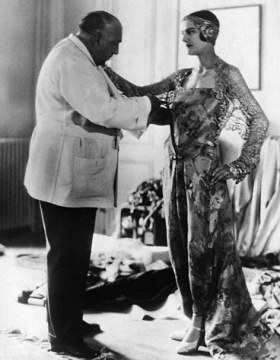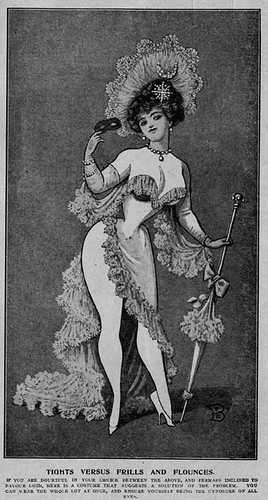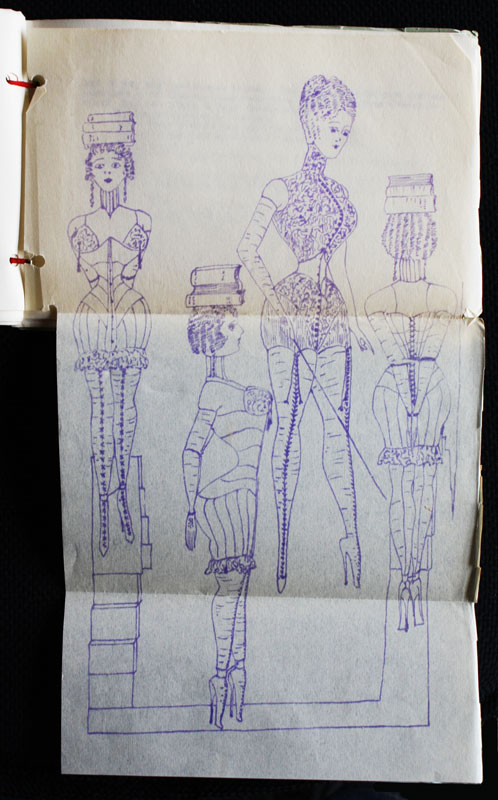Goodlad, Lauren M.E. and Michael Bibby, ed. Goth: Undead Subculture Duke University Press, 2007 Gbooks
Emerging from the Romantics, emphasizing the truth of extreme experiences, and probably wearing too much black, the goth culture and the BDSM subculture are close cousins, if not actual siblings.
Goodlad and Bibby identify Goth as splitting off from punk, but with an emphasis on internal emotion and sensual expression instead of punk’s extroversion and asexuality. It borrowed from many other ancient and external influences, such as the occult, pagan religions, and the BDSM/fetish culture. Goth survives, while grunge, for example, has faded out. Like BDSM, goth prospered on the frontier of the World Wide Web, experiencing a flowering in the mid-90s. The authors also observe a later decoupling of goth style from goth culture (The Matrix being Goth style without Goth attitude, Donnie Darko and Buffy the Vampire Slayer being Goth attitude without goth style).
Goth style offers an ambivalent alternative to conventional standards of gender and beauty (the football jock and the perky cheerleader), but one that has it’s own strictures. Non-skinny goths of either sex are swimming upstream, and one essay observes that while goth give men greater license to perform femininity, it doesn’t give women license to perform masculinity, instead promoting a waif-like ideal. (As is often the case with those who defy gender, it’s about expanding options for men only. I’ve noticed that on the Second Life marketplace, you can get a “femboy” avatar, which is a male skin on a female body shape, but there doesn’t appear to be any avatars of female skins on male body shapes, or even a name for such a configuration.)
Trevor M Holmes, a former male exotic dancer, reported on an oral ultimatum from management, making tans and pumped up biceps and chests mandatory, and ordering “Act more masculine– no swishing, no frilly clothes– and act straight.” Why? “That’s what our customers want.” There’s a policing of desire here, that even (or especially) gay men must promote and prefer the ideal masculine sex object and subject of the straight-acting jock.
Skipping a lot of very interesting essays, what first caught my attention was Jason K Friedman’s “‘Ah am witness to its authenticity’: Goth style in Postmodern Southern Writing.” Thomas Jefferson, in the eighteenth query of Notes on the State of Virginia, wrote about masters in psychic bondage to their slaves. (Karl Marx also used the language of ghosts and vampires to describe the political and economic.) This ties into the South-as-Orient/sexual heterotopia idea I mentioned in previous posts.
Other essays touch on gothic fiction and the intersection of the BDSM subculture and goth subculture. These essays frequently touch on two fundamental questions about subcultures: if you join a subculture where everybody dresses the same, is it truly liberation? And can subcultures truly escape commodification by the mainstream?
So, is there anything truly revolutionary or transgressive in goth (and the same could be asked of BDSM, and many other subcultures)? Or is it just another marketing category? Somebody once said, there’s value and merit in being a punk in Orange County; but the moment the OC punk can articulate why being an OC punk is important, he or she can’t be that anymore. The same could be said of the kids in Saturday Night Live’s “Goth Talk” sketches, trying desperately to inject some magic and history and mystery and style into their suburban lives as they plug the Gloom Room, “right next to the Pizza Hut on Hibiscus Road.” Bless their monochromatic hearts.



